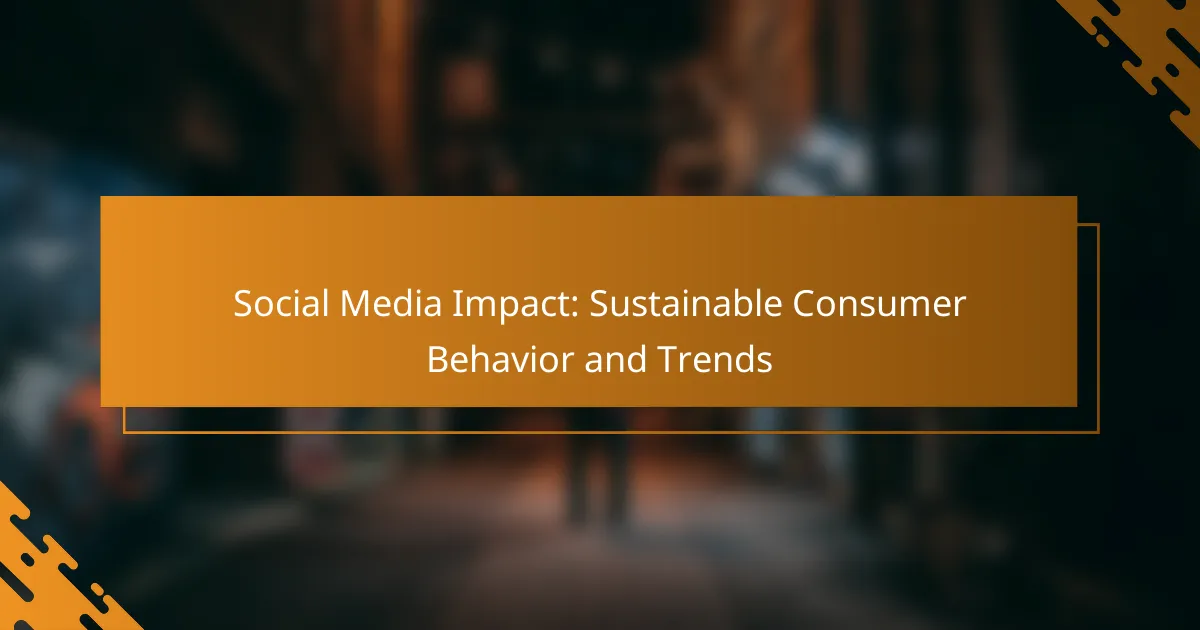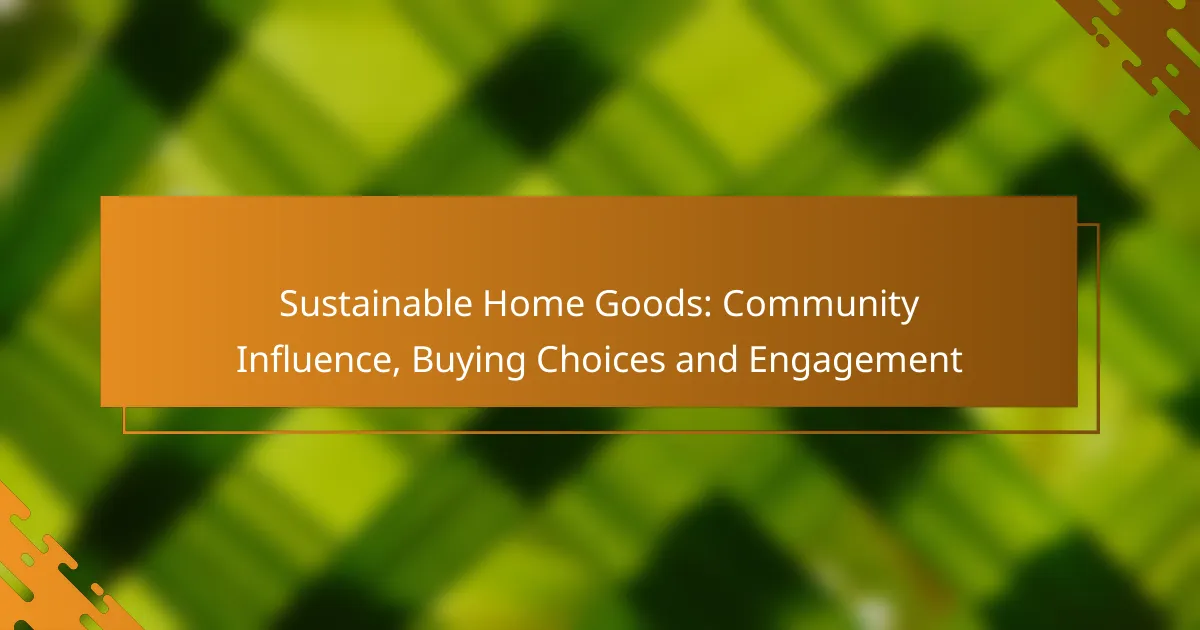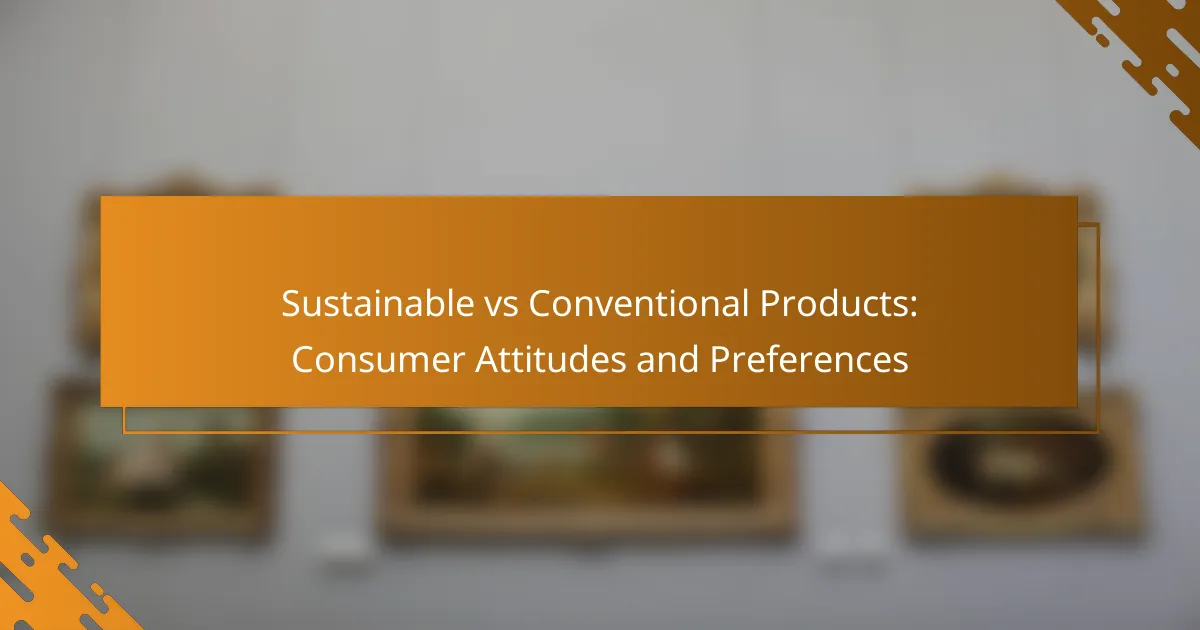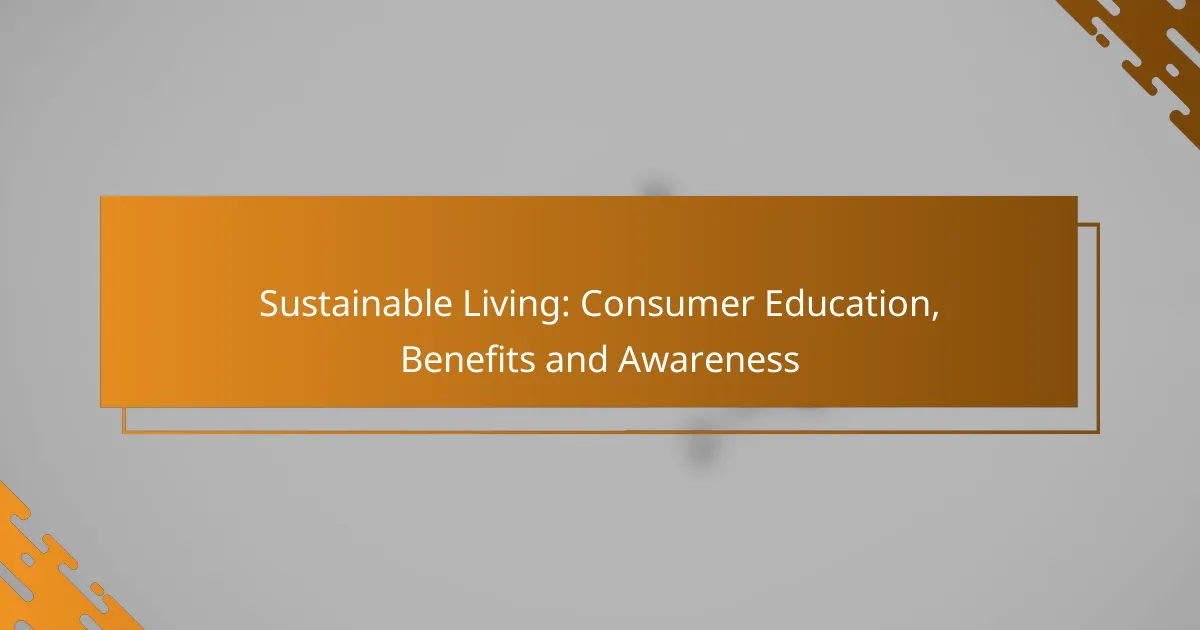Social media plays a crucial role in shaping sustainable consumer behavior by enhancing awareness and fostering community engagement around eco-friendly practices. As users interact with content promoting sustainability on platforms like Instagram and Twitter, their purchasing decisions and lifestyle choices increasingly reflect a commitment to environmentally friendly practices.

How does social media influence sustainable consumer behavior?
Social media significantly impacts sustainable consumer behavior by shaping awareness, preferences, and community engagement around eco-friendly practices. Through platforms like Instagram and Twitter, users are exposed to information about sustainability, which can drive their purchasing decisions and lifestyle choices.
Increased awareness of sustainability
Social media serves as a powerful tool for raising awareness about sustainability issues. Users can easily access information about environmental challenges, such as climate change and plastic pollution, through posts, videos, and articles shared by influencers and organizations.
This increased awareness often leads consumers to seek out sustainable products and practices. For example, a viral post highlighting the benefits of reusable bags may encourage individuals to switch from single-use plastics to more eco-friendly alternatives.
Promotion of eco-friendly brands
Social media platforms provide a space for eco-friendly brands to promote their products directly to consumers. Brands can showcase their sustainable practices, such as using recycled materials or ethical sourcing, through engaging content that resonates with environmentally conscious audiences.
Additionally, user-generated content, like reviews and testimonials, can enhance brand credibility. When consumers see their peers endorsing a brand’s commitment to sustainability, they are more likely to consider purchasing from that brand.
Community engagement and activism
Social media fosters community engagement around sustainability by connecting like-minded individuals and organizations. Users can join groups, participate in discussions, and share resources related to sustainable living, creating a sense of belonging and collective action.
Moreover, social media campaigns can mobilize activism, encouraging users to participate in events like clean-up drives or climate strikes. For instance, hashtags like #FridaysForFuture have galvanized global movements, demonstrating the potential of social media to drive real-world change in consumer behavior.
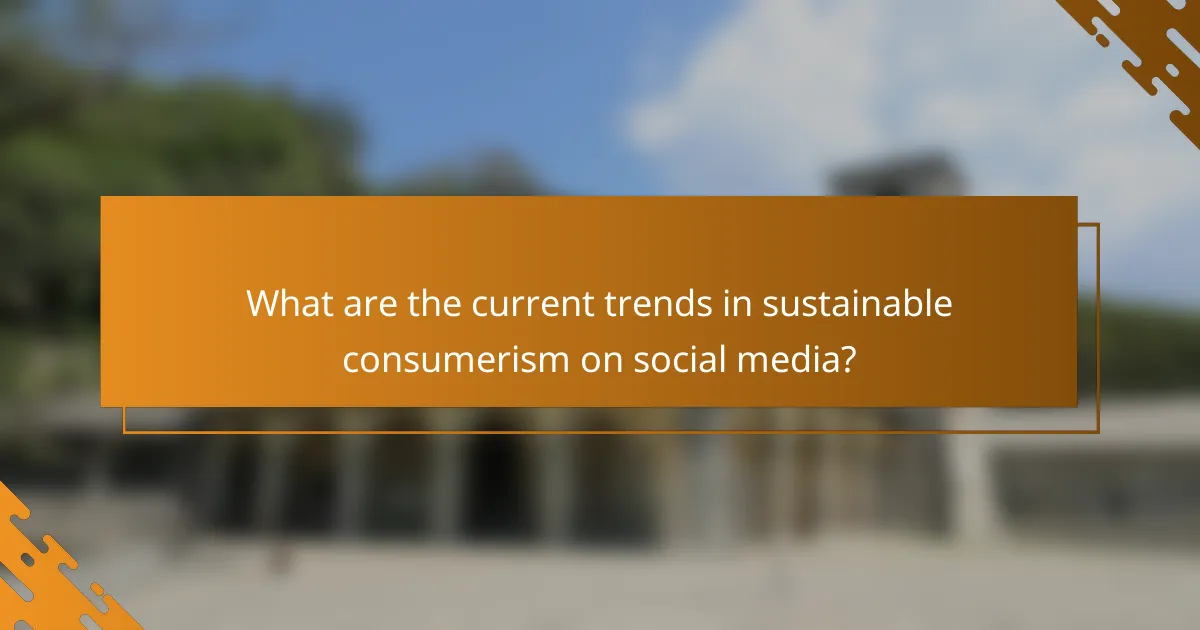
What are the current trends in sustainable consumerism on social media?
Current trends in sustainable consumerism on social media reflect a growing awareness and demand for environmentally friendly practices. Consumers are increasingly influenced by online content that promotes sustainability, leading to significant shifts in purchasing behaviors across various sectors.
Rise of zero-waste lifestyles
The zero-waste lifestyle trend emphasizes reducing waste to the minimum by reusing, recycling, and composting. Social media platforms showcase individuals and brands that advocate for minimal packaging and sustainable products, encouraging followers to adopt similar habits.
To embrace a zero-waste lifestyle, consider starting with small changes, such as using reusable bags and containers, and opting for bulk purchases. Many influencers share tips and DIY projects that help simplify the transition, making it accessible for everyone.
Popularity of ethical fashion
Ethical fashion focuses on clothing produced in a way that respects both people and the planet. This trend has gained traction on social media, where brands highlight their sustainable practices, such as fair labor conditions and eco-friendly materials.
When shopping for ethical fashion, look for certifications like Fair Trade or GOTS (Global Organic Textile Standard). Engaging with brands that share their supply chain transparency can help consumers make informed choices and support responsible production.
Growth of plant-based diets
The shift towards plant-based diets is fueled by concerns over health, environmental impact, and animal welfare. Social media plays a crucial role in popularizing plant-based recipes and lifestyle tips, making it easier for individuals to explore this dietary choice.
To adopt a plant-based diet, start by incorporating more fruits, vegetables, legumes, and whole grains into your meals. Many online communities offer support and resources, including meal plans and cooking tutorials, to help ease the transition.
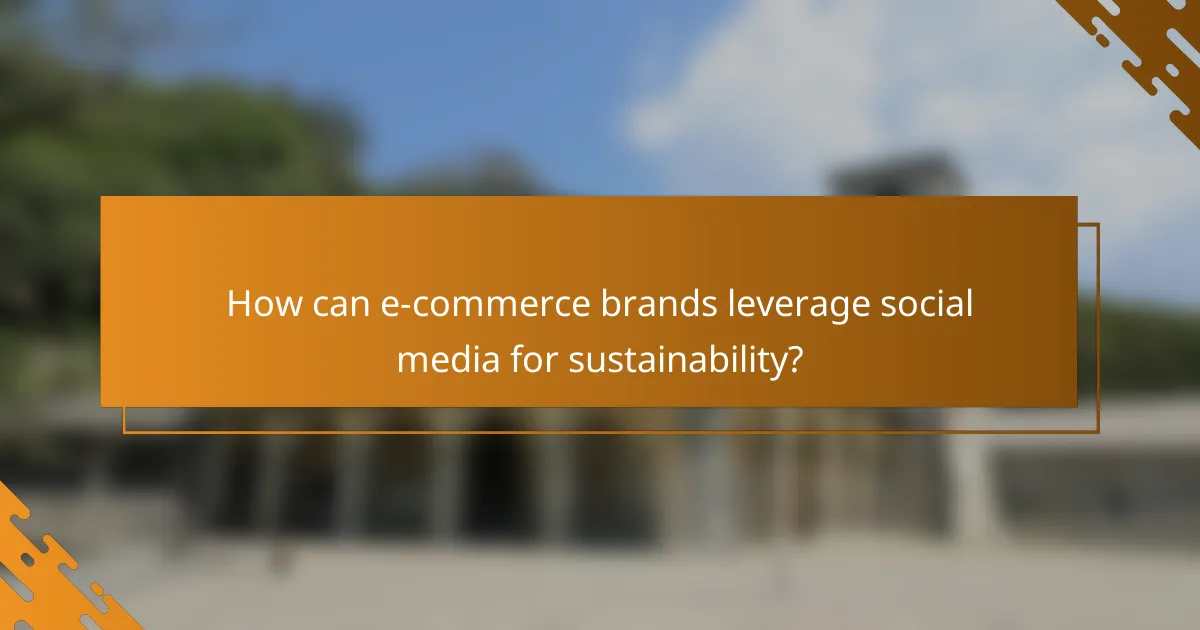
How can e-commerce brands leverage social media for sustainability?
E-commerce brands can effectively leverage social media to promote sustainability by engaging consumers through authentic messaging and community involvement. By utilizing platforms where their target audience spends time, brands can raise awareness, share sustainable practices, and foster a loyal customer base committed to eco-friendly products.
Utilizing influencer partnerships
Partnering with influencers who advocate for sustainability can amplify a brand’s message and reach. These influencers often have dedicated followings that trust their recommendations, making them ideal for promoting eco-friendly products. Brands should choose influencers whose values align with their sustainability goals to ensure authenticity.
Consider micro-influencers, who typically have smaller but highly engaged audiences. Collaborating with them can be cost-effective and yield higher engagement rates compared to larger influencers. For example, a brand could send products to influencers for reviews or host joint giveaways to increase visibility.
Creating engaging sustainability content
Producing high-quality content that highlights sustainable practices is crucial for engaging consumers. This can include blog posts, videos, and infographics that educate audiences about the environmental impact of their purchases. Brands should focus on storytelling to connect emotionally with consumers, illustrating how their products contribute to sustainability.
Interactive content, such as quizzes or polls, can also enhance engagement. For instance, a brand might create a quiz to help consumers discover their eco-friendly habits, encouraging them to share results on social media. This not only promotes the brand but also fosters a community around sustainability.
Implementing social responsibility campaigns
Social responsibility campaigns can significantly enhance a brand’s reputation and consumer trust. Brands should identify relevant social issues aligned with their mission, such as reducing plastic waste or supporting local communities. Campaigns can involve donations, partnerships with non-profits, or initiatives that encourage sustainable consumer behavior.
For example, a clothing brand might launch a campaign where a portion of sales goes to environmental organizations. Promoting these initiatives on social media can attract consumers who prioritize social responsibility, ultimately driving brand loyalty and increasing sales.

What metrics should brands track for social media impact?
Brands should track engagement rates, conversion rates, and brand sentiment analysis to effectively measure their social media impact. These metrics provide insights into audience interaction, sales performance, and overall brand perception, helping brands refine their strategies.
Engagement rates
Engagement rates reflect how actively users interact with a brand’s content on social media. This includes likes, shares, comments, and overall reach. A higher engagement rate indicates that the content resonates well with the audience.
To calculate engagement rates, divide the total interactions by the total followers or impressions, then multiply by 100 to get a percentage. Brands should aim for engagement rates typically ranging from 1% to 5%, depending on the platform and industry.
Conversion rates
Conversion rates measure the percentage of users who take a desired action after engaging with social media content, such as making a purchase or signing up for a newsletter. Tracking this metric helps brands assess the effectiveness of their campaigns in driving sales or leads.
To calculate conversion rates, divide the number of conversions by the total interactions or visitors, then multiply by 100. A good conversion rate generally falls between 2% and 10%, but this can vary widely by industry and campaign type.
Brand sentiment analysis
Brand sentiment analysis gauges public perception of a brand based on social media conversations and mentions. This metric helps brands understand whether their audience views them positively, negatively, or neutrally.
Tools for sentiment analysis often use natural language processing to categorize mentions and comments. Brands should monitor sentiment trends over time, aiming for a positive sentiment score, which can significantly influence customer loyalty and purchasing decisions.
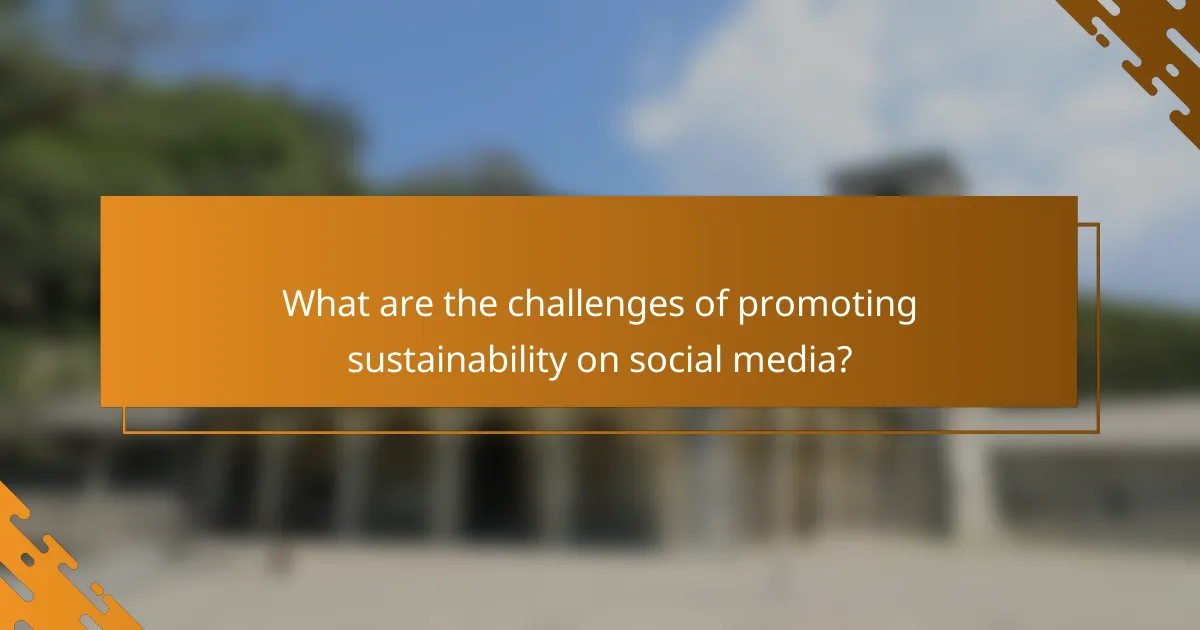
What are the challenges of promoting sustainability on social media?
Promoting sustainability on social media faces several challenges, including the prevalence of misinformation and the difficulty in building trust with consumers. Brands must navigate these obstacles to effectively communicate their sustainability efforts and engage their audience.
Greenwashing concerns
Greenwashing refers to the practice of misleading consumers about the environmental benefits of a product or service. This can lead to consumer distrust, as many individuals become wary of brands that make exaggerated claims about their sustainability practices.
To combat greenwashing, brands should provide transparent information about their sustainability initiatives, including third-party certifications and clear data on their environmental impact. For example, a company might showcase its use of recycled materials or energy-efficient production methods with verifiable evidence.
Consumer skepticism
Consumer skepticism towards sustainability claims is on the rise, driven by past experiences with misleading marketing. Many consumers now critically evaluate the authenticity of a brand’s sustainability efforts before making purchasing decisions.
Brands can address this skepticism by engaging in open dialogue with their audience and sharing real stories about their sustainability journey. Utilizing social media platforms to highlight genuine practices and customer testimonials can help build credibility and foster trust.
